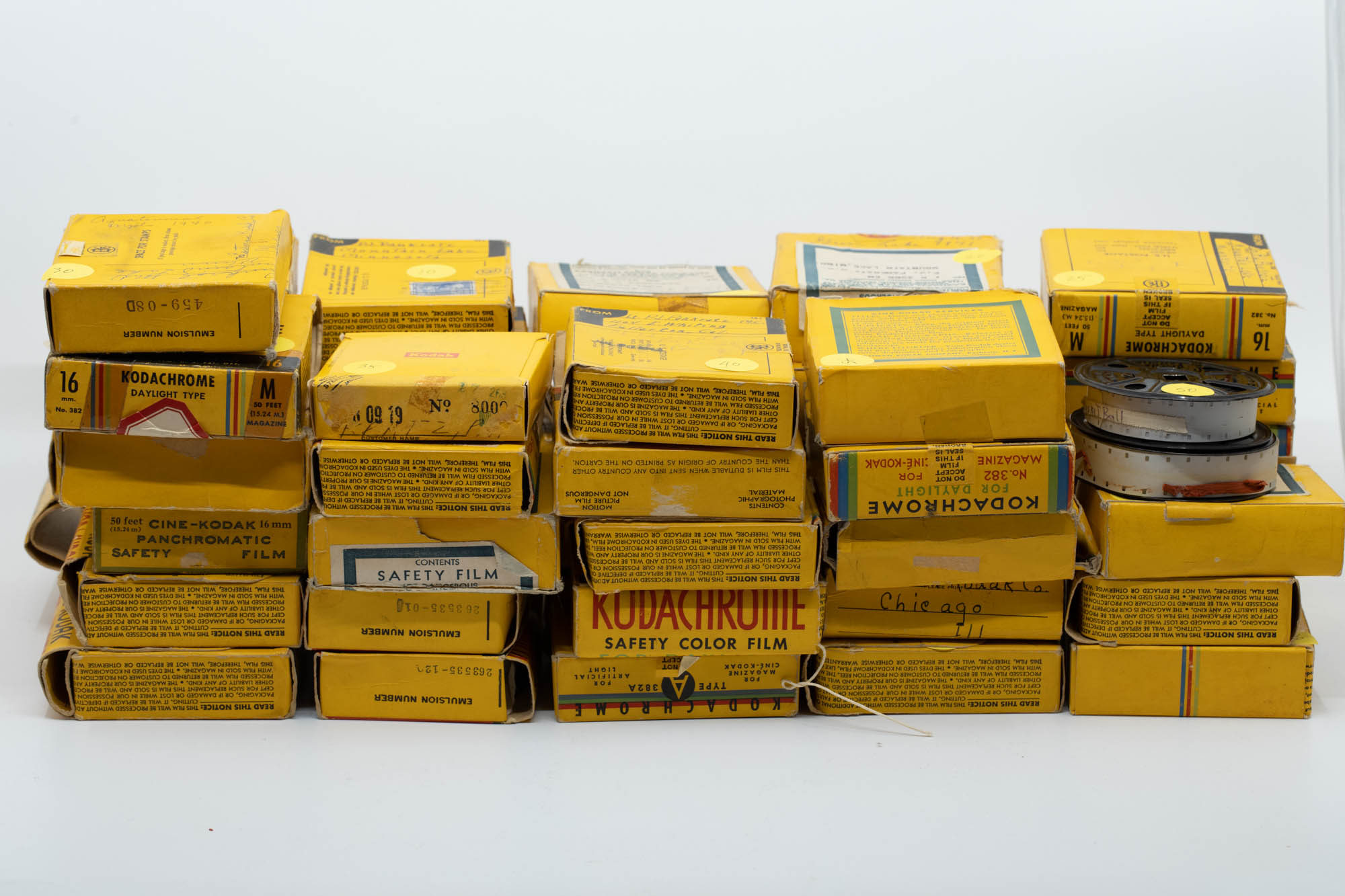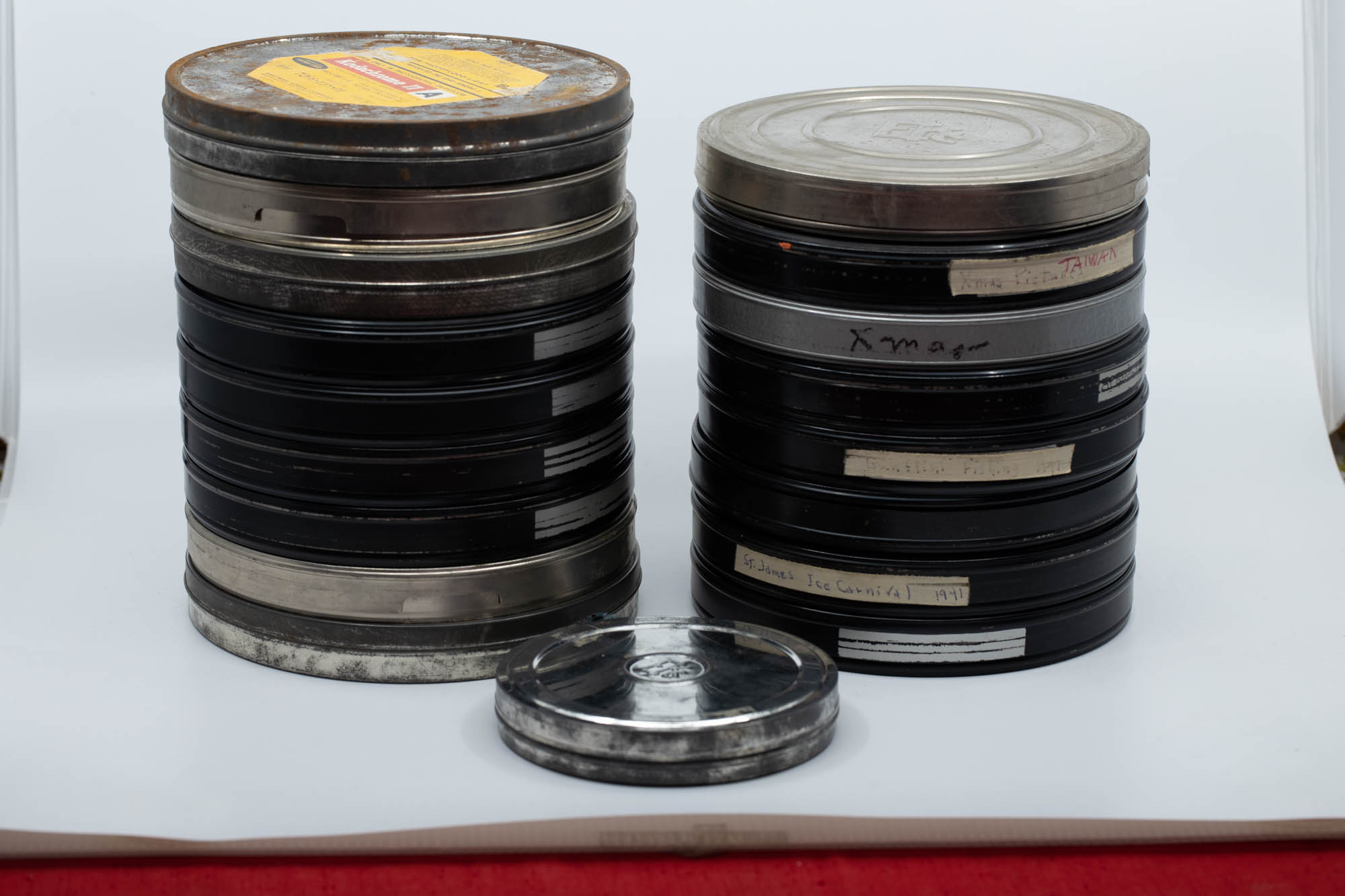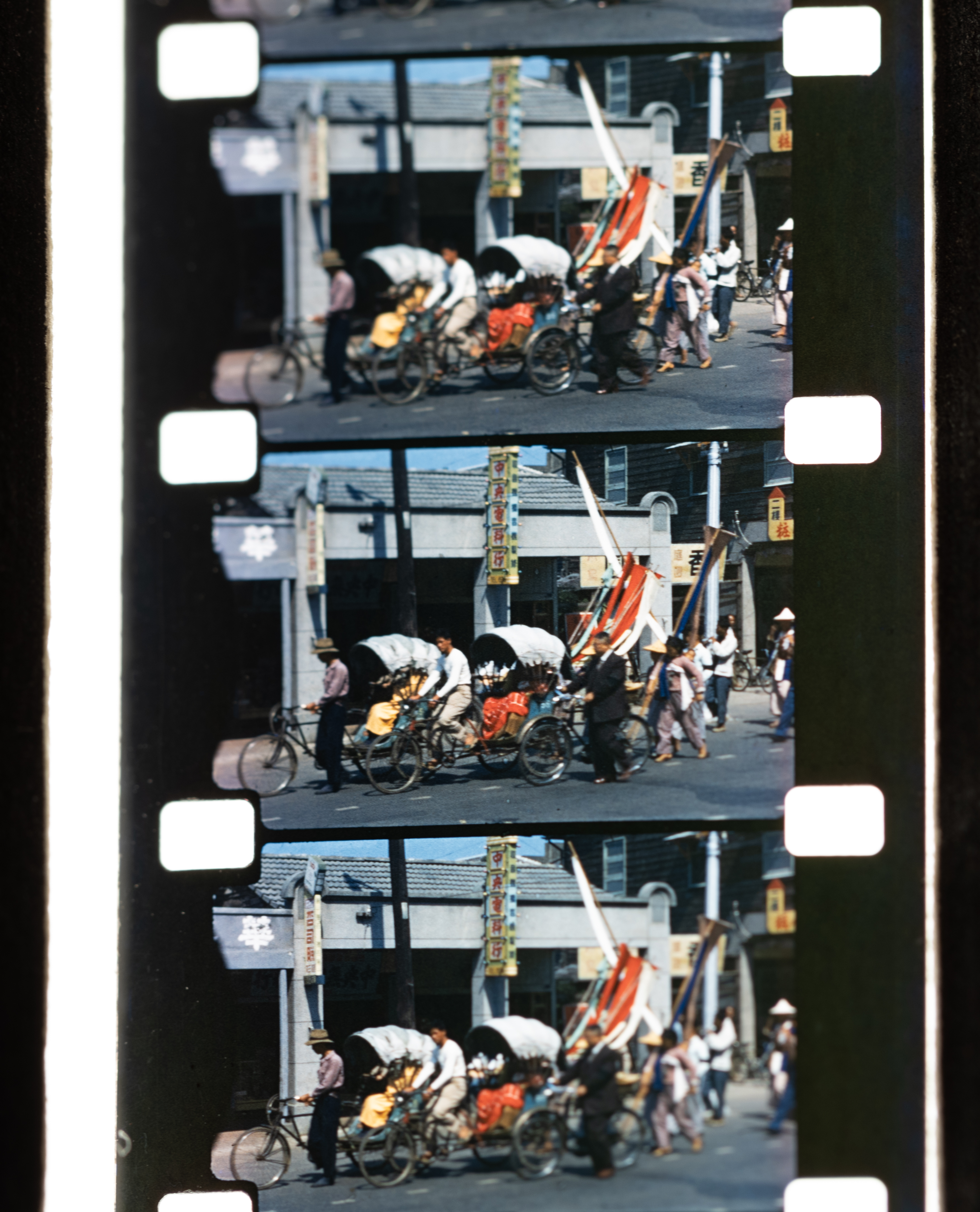
I have written before about the treatment of family photos and other artifacts from previous generations. I recently re-encountered the collection of old 16mm home movies made by each of my grandfathers, which span a time range from the 1930s to the 1960s. I had sort of decided that I didn’t want to invest the time and expense of converting them to modern digital media just to look through them maybe once, wondering who these unknown people are, at events and places that have no particular meaning to me.
Still, I couldn’t bring myself to discard them, ending their life in some landfill. So I made a final effort to find someone who might actually be interested in them, perhaps as props for period theater productions, or as some old-timey footage to place in a modern film project. A google search did not find such uses, other than to mention that there is a market for old movies, without really listing many. But one suggestion was to check with local historical societies, who are sometimes interested in them for research and documentary purposes.
I discovered that the website of the Minnesota Historical Society had a page for donating old stuff, including photographs and movies. I filled out a “donation request” (obviously they want to be selective about what people try to push on them), and received an email a few days later from Jennifer Huebscher, “Curator of Photography and Moving Images” at MNHS. She expressed cautious interest but needed more information.
This got me to inspect the various dates and markings on the old reels of film. Most were small 3-inch diameter spools still in their yellow Kodak mailing box. Some were larger, 7” reels in canisters, onto which multiple shorter films had been spliced.

Making home movies in those years was a labor-intensive process: loading a 50-foot spool of film into a wind-up movie camera, selecting the subjects worth filming, carefully setting the exposure and focus, shooting the scenes, then unloading the film and mailing to Kodak for processing. When it returned, the reel could be threaded through a projector to show a 1-1/2 minute replay of the scene that happened a few weeks earlier. There was no sound, but it still must have seemed like magic!
I went through the film reels and gave each a numbered sticker and made a list, later assembled into a spreadsheet, of the markings on the large reels, and any labels and addresses and dates on the Kodak boxes containing the smaller reels.
The movies had been created by two avid amateurs but were now intermixed in the collection I inherited from my dad. One of the cameramen, Dr. Peter J Pankratz was my mother’s father, a physician in Mountain Lake MN; the other, my dad’s father, Theodore A Olson Sr, was a professor of Public Health at the University of Minnesota. Both were early adopters of the technology of the times. Interestingly, there was more information on the reels of the small-town physician grandfather, than from my biology professor grandfather, whom I knew to be a meticulous note-taker. I suspect there is a missing log book somewhere.
While assembling this information, I happened to encounter some DVDs that my dad had created long ago when he had converted some of the movies to digital video. They are so old (more than 20 years I think), that the data is deteriorating, a characteristic of optical disks of a certain type and age, and some of the video files could not be read. Another problem was that they were encoded in an old format that needed specialized software to view it. The conversions are poor- there were interlace artifacts (which shouldn’t exist at all on a movie conversion), and the frame rate was wrong (30 fps instead of 24). I decided that if these film clips are going to survive, I would need to convert the old format to a modern format (MP4).
So I purchased the software that could do this (and fix the frame rate) and now have two collections of digitized movies, one for each grandfather. Having invested this much time, I became curious about them and made notes about the various scenes. In trying to identify the people in them, I realized that I am among a few remaining descendants who has any memories of them, and my memory has never been very good!
I put the doubly converted DVD files onto my photo site so other interested parties can take a look. Here are links to these converted old movies.
Open one of the movies by clicking on it. There will be an icon with an “i” (info) on the left side. Click it to reveal the notes I made in the caption field. You can expand the view to full-screen to see details. Most of the files are not very compelling viewing, but there are occasional treasures to be found.
One thing I discovered was that Ted’s movie-making skills evolved over the years. The early ones are just aiming the camera at stuff that was going on. By the time of his most recent movie in the set (1953), he was directing his subjects to act and portray a story. A carefully crafted shot shows a handwritten letter, held and being read by his mother to his father, who is seen in the background listening carefully. I was able to examine a frame of the shot and discovered to my surprise that this letter, written in cursive English by his wife Grace, contained the news of the first great grandchild—me! The reel went on to depict the 50th anniversary of his parents Henry and Anna, and even included a special effect (indicating passage of time) at the end.
I assembled all the information I had gleaned and sent it to Jennifer, along with the descriptions of the original moviemakers. She was pleased to get it and has made selections of the films she finds of interest. I will be delivering them soon.
By now, I have spent far more time on this project than I ever planned and have become invested and curious about the movies that have not yet been digitized. What other treasures might they hold? I’ll be converting a few of them, using modern digital scanning methods, to find out. If there’s anything worth sharing, I’ll post it here.



Wonderful story about stories. Glad they will be viewed and maybe preserved for all history. The film from Taiwan might be a telescope into a time now long gone from that country.